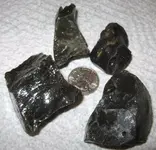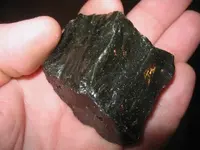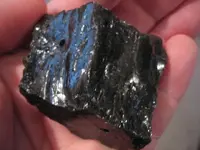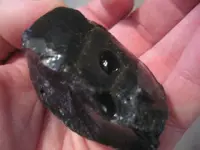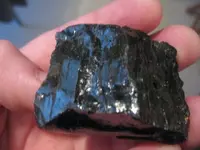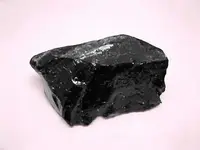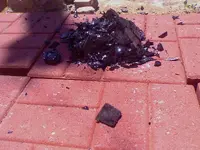Ok, admittedly I went to school back in the time when they were only thinking about things like mitocholdrial DNA, so perhaps I am in league with the blood letters and conjurers. But I did pay attention in my geology class and I have just a short lecture that is at some odds with Tuberale.
1. If tektites are ejecta from meteorite hits, why are they all (pretty much) te same color, whether the met. hit granite, red sandstone or white limestone? And if the met. explodes in the atmosphere, how can they create molten ejecta, even with small pieces.
Tuberale answers: Meteorites can explode (and often do) before they strike the ground. At that stage, they are not meteorites, but rather meteors. Only after the object has struck the earth is it called a meteorite.
2. Show me a Canyon Diablo Tektite. Really. I would like to see one.
Tuberale answers I believe Canyon Diablo was too long ago for tektites to survive till today. I think. I know the main mass is still buried underneath the crater, but at some depth. Hundreds of pieces of the meteorite were removed from the explosive force of the impact, and have been found several miles away. My uncle gifted me a small piece of meteorite recovered near Canyon Diablo. I could give a picture of that, if you like.
3. Obsidian is rapidly cooled lava that did not develop crystal structure. But that also is the part that I don't have a full understand of.
Tuberale answers Yep. Pretty much that's it. If the flow cools relatively quickly, it has no time to form crystals. Basalt is usually lava that cools over a period of years, leaving the huge crystaline structure behind. To see it, one need only look at Devil's Tower in Wyoming.
4. Pumice is frothy glass that is erupted from the volcano. The Son of Krakatoa (forgetting again) has put out feet and feet of pumice that has washed back into the beach.
Tuberale answers I have not seen pumice erupted from a volcano. I have seen pumice flows near the Three Sisters in Oregon, as well as obsidian flows nearby. But maybe we are talking the same thing here. Lava does not have to move rapidly to be a lava flow. In Oregon as in more level areas of Hawai'i, lava moves like slow pudding most of the time.
5. Basalt is a type of lava, not a mineral. It has minerals in it.
Tuberale answers You're right! Mea culpa.
6. Aa (pronounced AhAh, because when you walk on it, it is sharp and hurts your fee. Ah.....ah....ahAHAH.) is a form of a lava flow that is sharp and pointy. Another kind of flow is ropy and I think may be called pua pua. But they are flows, not types of lava. You don't ah ah on pua pua.
Tuberale answers: I am unfamiliar with pua pua. And I just asked someone who grew up on Hawai'i, and doesn't recognize the name either. I've never heard the above explanation of aa lava before. Not saying it's wrong, just never heard of it before.
7. I don't know about andesite, but Rhyolite is a type of lava also.
Tuberale answers While I am not a geologist or a vulcanologist, I believe rhyolite is a form of lava.
8. Lava bombs are just that, expelled lava that makes a bomb with a streaming tail that forms as it flies through the air. It is the same substance as what is in the volcano and in the flow. Basalt, rhyolite, or whatever. But different from tektites. I have seen lava bombs in the walls of Hanauma Bay, and if it wasn't for the Feds and Pele, I would have smuggled one out.
Tuberale answers Lava bombs pretty common around Mt. St. Helens, and I believe common near Mt. Lassen (in Northern California) as well. But bombs are ejecta (explosively ejected from a volcano usually during an eruption). The tails common to lava bombs are the trailing portions cooled by the air before the rock hits the earth again. Ejecta from Krakatoa was found hundreds of miles away, and the explosive eruption was heard either 2,000 or 3,000 miles away. (Sorry, that was a little before my time.)
So, there you have it. Maybe we should team up and get our Doctorates. And fight out opposing theories. But I will tell you, for every hole I have for your ejecta tektite theory, there is one for my streaming solidification of gasses theory. But which ever one, I don't think there is a tektite out there that one can say is rock and glass.
Anyone out there need pictures of these things? I hate to be too boring and not even offer photos.



